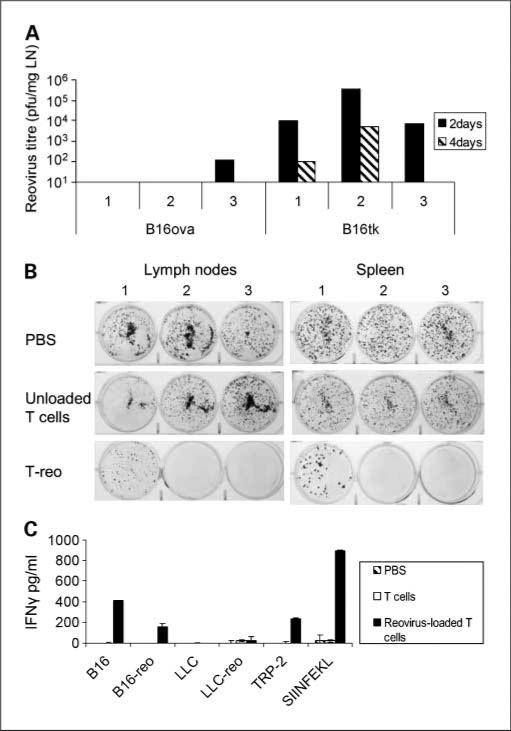Fig. 2.
Reovirus loaded T cells purge B16ova LN metastases in vivo and generate antitumor immunity, in the absence of reoviral replication. A, C57BL/6 mice were seeded (three per group) at 5 × 105 B16ova or B16tk cells s.c. At 10 d, 2 × 106 T cells loaded with 0.1 pfu reovirus were adaptively transferred. Tumor-draining lymph nodes were harvested at 2 and 4 d thereafter, and viral titer determined by plaque assay. Each titer represents an individual animal. B and C, C57BL/6 mice were seeded (n = 3 per group) with 5 × 105 B16ova cells s.c. Ten days later, mice were treated with iv PBS, 2 × 106 T cells, and 2 × 106 T cells loaded with reovirus 0.1 pfu per cell (T-reo). 10 d posttherapy, tumor-draining LN and spleens were harvested, disaggregated, and 106 cells seeded in six-well plates in G418-containing media to select for B16ova cells. B, after 7 d, the number of G418-resistant colonies were photographed. C, splenocytes recovered at day 10 after treatment were pulsed with tumor cell lysates or peptides as shown, in triplicates of 7.5 × 105 cells. Forty-eight hours later, supernatants were assayed by ELISA for IFN-γ. Columns, means of triplicates; bars, SE.

